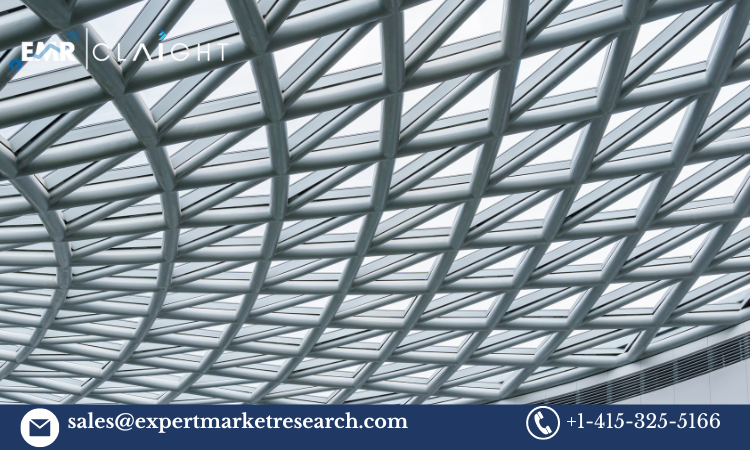Structural steel plays a crucial role in the construction and manufacturing industries, offering durability, strength, and versatility. As a result, it is heavily influenced by factors such as raw material availability, global economic conditions, and infrastructure development trends. This Structural Steel Price Forecast Report aims to provide a detailed analysis of the market, taking into account various factors like market dynamics, demand-supply trends, and an extensive price forecast.
Outlook
The global structural steel market has been experiencing steady growth over the past few years, driven by increasing construction activities in emerging markets and the continuous development of infrastructure projects worldwide. With an ever-growing urban population, countries are focusing on modernizing their transportation networks, residential areas, and industrial facilities, which is further fueling the demand for structural steel.
In terms of pricing, the structural steel market is expected to witness fluctuations due to several influencing factors such as raw material costs, energy prices, and trade policies. While prices are expected to rise slightly in the short term, they are anticipated to stabilize in the long run as supply chain issues resolve and new production capacities come online.
Request a free sample copy in PDF: https://www.expertmarketresearch.com/price-forecast/structural-steel-price-forecast/requestsample
Additionally, the global push towards green energy and the adoption of sustainable building practices is likely to impact the demand for structural steel. Governments and construction companies are increasingly opting for high-quality steel with lower carbon footprints, leading to a potential increase in costs associated with eco-friendly production processes.
Market Dynamics
Raw Material Prices
One of the most significant factors affecting the price of structural steel is the cost of raw materials, particularly iron ore and coking coal. These materials make up the bulk of steel production costs, and their price fluctuations have a direct impact on the cost of structural steel.
In recent years, raw material prices have been volatile due to global supply chain disruptions, political tensions, and fluctuating demand. For instance, iron ore prices saw a substantial rise in 2021 due to supply chain bottlenecks and high demand from China, the largest consumer of steel globally. However, these prices have started to decline as demand levels off and production catches up.
Energy Costs
Steel production is energy-intensive, and any fluctuation in energy prices, particularly electricity and natural gas, directly impacts production costs. The energy crisis in Europe and other parts of the world has led to increased operational costs for steel producers. These costs are often passed on to consumers, affecting the overall price of structural steel. The recent stabilization of energy prices offers some relief, but this remains a critical factor to monitor for future price forecasts.
Trade Policies and Tariffs
Global trade policies play a vital role in shaping the structural steel market. Tariffs and trade barriers can either restrict or boost the supply of steel in certain regions. For example, U.S. tariffs on imported steel have impacted the pricing and availability of structural steel in North America, leading to higher prices for domestic buyers. Any changes in trade policies, particularly between major steel-producing and consuming countries like China, the U.S., and India, could have significant implications for the market.
Environmental Regulations
As governments worldwide strive to reduce their carbon emissions, the steel industry has faced increasing pressure to adopt more sustainable practices. This shift has led to innovations in green steel production methods, such as the use of hydrogen in place of carbon for iron ore reduction. While these methods are more environmentally friendly, they are also more expensive, which could contribute to higher structural steel prices in the future.
Demand-Supply Analysis
Global Demand
Demand for structural steel is largely driven by the construction sector, including residential, commercial, and industrial projects. Developing nations, particularly in Asia and the Middle East, are witnessing an increased demand for steel due to rapid urbanization and industrialization. Furthermore, the demand for structural steel is also increasing in developed countries where infrastructure renovation and modernization projects are in progress.
However, demand for structural steel is not uniform across regions. For instance, while countries like India and China are expected to witness significant growth in steel demand, European markets might experience slower growth due to economic uncertainties and stringent environmental regulations.
Global Supply
On the supply side, the global steel industry has been dealing with numerous challenges, including rising energy costs, labor shortages, and regulatory hurdles. These issues have caused supply chain disruptions, which, in turn, have affected the availability of structural steel in key markets.
The recent easing of global supply chain constraints and increased steel production capacity in countries like China and India are expected to alleviate some of these challenges. However, supply-side risks remain, particularly with regard to environmental regulations and energy supply disruptions.
In terms of production, China continues to dominate the market, accounting for more than half of the global steel production. However, China’s strict environmental policies and carbon reduction goals could lead to a slight decline in production capacity, which might affect global supply in the coming years.
Extensive Forecast
Short-Term Forecast (2024-2025)
In the short term, the price of structural steel is expected to see moderate fluctuations due to ongoing supply chain issues and rising energy costs. In addition, the demand for steel in emerging markets is expected to remain robust, contributing to higher prices.
Several infrastructure projects in Asia and the Middle East, as well as post-pandemic recovery efforts in the U.S. and Europe, are expected to drive demand for structural steel. However, potential slowdowns in economic growth and construction activity, particularly in Europe, could offset some of these gains.
Long-Term Forecast (2026-2032)
Looking ahead to the longer term, the structural steel market is expected to stabilize as supply chains normalize and production capacities increase. Global investments in green infrastructure and sustainable development will continue to drive demand for structural steel, particularly in regions like Asia and North America.
The long-term forecast suggests that structural steel prices will remain relatively stable, with minor fluctuations driven by raw material costs, energy prices, and environmental regulations. However, any significant disruptions in global trade, such as the imposition of new tariffs or political tensions between major steel-producing countries, could alter this outlook.
Detailed Insights
- Technological Advancements: The steel industry is seeing a shift towards cleaner and more efficient production methods, such as electric arc furnaces (EAF) and the use of renewable energy in production processes. These advancements will play a key role in shaping the future of the structural steel market.
- Regional Trends: Asia is expected to continue dominating the global structural steel market, with China, India, and Japan being major contributors. However, North America and Europe are also projected to see steady demand growth, particularly in the renewable energy and infrastructure sectors.
- Sustainability: With the global focus on reducing carbon emissions, sustainable steel production practices are gaining traction. The adoption of green steel, which is produced using low-carbon technologies, is expected to grow, further impacting the price dynamics of structural steel.
- Substitution: In certain applications, alternatives like composite materials and aluminum are being used in place of structural steel due to their lightweight properties. However, structural steel remains the material of choice for most large-scale construction projects due to its superior strength and durability.
In conclusion, the structural steel market is poised for steady growth, driven by increased demand from infrastructure development and the adoption of sustainable construction practices. While short-term fluctuations in price are expected due to supply chain issues and raw material costs, the long-term outlook remains stable. Structural steel will continue to play a critical role in the global construction industry, with advancements in technology and sustainability shaping the future of the market.
Media Contact:
Company Name: Claight Corporation
Contact Person: Endru Smith, Business Consultant
Email: sales@expertmarketresearch.com
Toll Free Number: US +1-415-325-5166 | UK +44-702-402-5790
Address: 30 North Gould Street, Sheridan, WY 82801, USA



